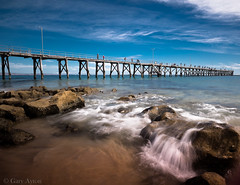43rumors.com posted a blog post highlighting the DxOMark lens test of the Olympus m.ZD 12mm f/2.0 lens has revealed some interesting findings further confirming Micro Four Thirds can achieve high image quality results comparable in resolution to even full frame pro lenses on a APS-C or full frame camera.
“With its extraordinary sharpness for a micro 4/3 lens, the Olympus M. Zuiko Digital ED 12mm f/2.0 is a winner.
Pitted against the Nikon 1 NIKKOR 10mm f/2.8, this Olympus 12mm holds an overwhelming advantage. Even more impressive is the fact that this lens can compete with much bigger lenses, such as the Canon 24mm L-series mounted on a 7D.
In short, it really does seem that a high-quality, fully micro 4/3 camera-lens combination is perfectly capable of replacing an APS-C combination — and the Olympus M. Zuiko Digital ED 12mm f/2.0 is a particularly high-quality micro 4/3 lens!”
So I decided to look a little deeper.
Their tests show that it has “remarkable sharpness in the centre, although less so in the corners, with minimal vignetting or CA but significant distortion of 2.5% on a Panasonic GH-2 which may require software correction”.
Their overall lens test score (which suggests similar quality maximum print size and is determined by the lens, camera resolution and sensor noise) for this lens on a GH-2 was 19 at f/2.0 which just beat the Canon EF 24mm f/1.4L II pro lens on a Canon 7D at f/2.8 – this seems a strange comparison to me given that field of view is 36mm not the 24mm of the Olympus lens, and the aperture is stopped down 2 stops. It was much, much better than the Nikon 1 Nikkor 10mm f/2.8 lens which is a 27mm equivalent field of view lens.
So let’s look at how the Olympus lens compares with a Canon EF 24mm f/1.4L II pro lens on a full frame 20mp Canon 5D Mark II dSLR:
- Olympus lens at f/2.0 is sharper in the centre 1/3rd than the Canon lens at f/1.4 or f/2.0 but corners are less sharp (check out the Field Maps under Measurements – Resolution)
- at f/2.8 on each lens, the sharpness levels across the frame a fairly similar
- the Olympus lens has much less vignetting but more distortion (2.5%) – this seems to differ from photozone.de tests so there may be a lens sample issue to explain this or perhaps distortion is corrected on Olympus cameras whereas DxOMark scores are based upon uncorrected RAW files.
- the Olympus lens at f/2.0 has marginally less CA across the frame than the Canon lens at f/1.4 or f/2.0
- Canon lens uses a large, expensive 77mm filter, while the Olympus lens uses a petite, cheap 46mm filter
- the Canon lens weighs 5 times as much and is well over double the price of the Olympus lens
- when used on the Olympus OM-D, the Olympus lens gains 5EV 5 axis image stabilisation which partly compensates for the better high ISO performance of a full frame sensor
Now lets compare it to a Nikon AF-s Nikkor 24mm f/1.4ED G on a Nikon D700 full frame dSLR:
- Olympus lens at f/2.0 is much, much sharper in central 2/3rds and perhaps comparable in the corners at ANY aperture of the Nikon lens (check out the Field Maps under Measurements – Resolution)
- Olympus lens has much more distortion
- Olympus has much less vignetting at f/2.0 than the Nikon at f/1.4 but comparable at f/2.0
- Olympus lens at f/2.0 has less CA across the frame than the Nikon lens at f/1.4 or f/2.0
- Nikon lens uses a large, expensive 77mm filter, while the Olympus lens uses a petite, cheap 46mm filter
- Nikon lens is 5x heavier, twice as long and about 2.5x the price – from these resolution results I would feel really bad carrying that around when there is a much lighter, cheaper sharper option.
- it is of course possible that the difference between a 16mp GH-2 and a 12mp D700 requires some adjustment to these resolution tests for direct comparison, however DxOMark states that in the case of resolution tests, results are normalized (stretched for a cropped sensor) to a 24x36mm output, which would lower the resolution score of a lens measured on a cropped sensor vs a full frame sensor.
- I must admit I am not sure I understand why a 2010 Nikon designed lens at that price could be worse at wide apertures than a much smaller, cheaper lens on a sensor a quarter the size, but perhaps the tests using a 24mp full frame which show that this lens produces much better edge to edge sharpness across the frame from f/5.6-11 than either the Olympus or Canon explains what this lens was optimised for – and it wasn’t low light shooting at wide apertures but landscapes and architecture at mid-apertures.
The Olympus lens is also optimised for movies, and the OM-D image stabiliser will also work during movie mode, but is not weatherproofed like the pro lenses.
The Canon and Nikon lens with its f/1.4 aperture will be better suited to low light moving subjects and will allow more local blurring adjacent to the subject, while the full frame sensor will allow higher ISO and also smaller apertures to be used before diffraction limitations impair resolution.
There are good reasons why professionals will still want the Canon 24mm f/1.4L II lens on a full frame dSLR, but it is very reassuring that for most purposes, the Micro Four Thirds kit will give comparable, and in some circumstances, better results at a much lower price point and a much smaller, lighter package.
There are no comparable quality lenses at 24mm field of view in the other mirrorless camera systems such as Sony NEX or Samsung NX, and there are no comparable f/2.0 or faster 24mm field of view equivalent lenses available on the Canon APS-C or Nikon DX systems.
This Olympus lens is another great reason to consider Micro Four Thirds along with the other fantastic little prime lenses such as the Panasonic 20mm f/1.7 – again there is NO COMPARABLE lens for other mirrorless or dSLR systems!
You know which one I will be taking on my travels!!!
More on Micro Four Thirds lenses and on comparisons of lens availability for the different mirrorless camera systems.










